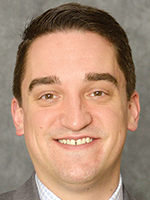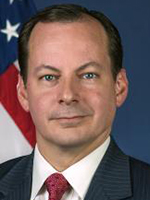Staff Reporter
Industry Responds to FMCSA’s Proposed Sleeper Berth Pilot Program

[Stay on top of transportation news: Get TTNews in your inbox.]
The Federal Motor Carrier Safety Administration’s recently proposed pilot program regarding splitting up time in the sleeper berth has received varying responses from members of the transportation industry.
The new pilot program, which was announced Jan. 14, would give truck drivers more flexibility. Specifically, the pilot program would evaluate two options for drivers to divide their required 10 hours off duty in the sleeper berth: a 6/4 split and a 5/5 split. Participating drivers would operate for a baseline period of 90 days under current hours-of-service regulations with the options of dividing their time in the sleeper berth in these segments.
Dan Horvath, vice president of safety policy for American Trucking Associations, said the proposed pilot program is a positive step toward gathering information on this subject. He noted that, in the past, ATA has issued comments to FMCSA stating data does not yet exist to support instituting sleeper berth flexibility greater than a 7/3 split.

Horvath
“We’re pleased that the agency is going to look at additional possibilities of splitting the split sleeper berth via a pilot program,” Horvath told Transport Topics. “It’s a good step in getting the data, and that data’s ultimately going to be what leads us to discuss it with our members.”
The pilot program would allow temporary regulatory relief from HOS rules for a limited number of drivers who hold a valid commercial driver license and regularly use a sleeper berth to accumulate their required 10 hours of off-duty time.
Advocates for Highway and Auto Safety had a less positive response, expressing opposition to FMCSA’s proposed pilot program. The group voiced concern that the increased flexibility allowed by the pilot program would exacerbate the issue of driver fatigue.
“The proposed pilot program would eviscerate safeguards that enable drivers using a sleeper berth to have the opportunity to get consolidated rest,” Advocates President Cathy Chase said. “This continuous effort to cripple minimal safety measures is antithetical to FMCSA’s mission of implementing countermeasures that will reduce truck crashes and fatalities.”
@SafeRoadsNow Pres. Cathy Chase on @FMCSA’s sleeper berth pilot program: “This proposal would threaten public safety at a time when truck crashes claim far too many lives and cause lifelong debilitating injuries.” https://t.co/M6sWMxfd9c — Advocates (@SafeRoadsNow) January 15, 2021
As part of the pilot program, FMCSA would collect driver metrics, such as crashes, fatigue levels, caffeine consumption and duty status for the duration of the study and analyze participants’ safety performance.
How can we control an unruly trucking tech stack and streamline fleet management practices? Host Seth Clevenger speaks with Ray Greer, CEO of Omnitracs, which acquired SmartDrive last year. Hear a snippet, above, and get the full program by going to RoadSigns.TTNews.com.
Horvath noted the data collected from the pilot program does not guarantee the agency will go forward with a proposed rulemaking regarding splitting up time in the sleeper berth.

“They could find that the data’s not favorable to safety, or they could find the total opposite,” Horvath said. “That’s one of the great things about the pilot program.”
Carriers and drivers interested in participating would apply to FMCSA. To qualify, carriers must meet certain criteria. For example, they must not have an unsatisfactory safety rating, any enforcement actions within the past three years or a driver out-of-service rate that is higher than the national average.
Additionally, participating motor carriers must agree to comply with all procedures and grant permission for researchers to install a video-based onboard monitoring system.
The implementation date will be announced in a subsequent Federal Register notice. Public comments must be received within the 60-day window after the FMCSA notice is published in the Federal Register.

Deck
“FMCSA continues to explore ways to provide flexibility for drivers while maintaining safety on our roadways,” Deputy Administrator Wiley Deck said. “This proposed pilot program will provide needed data and feedback for the agency to use now and in the future. Gathering more data on split-sleeper flexibility will benefit all [commercial motor vehicle] stakeholders. We encourage everyone to review this proposal and provide their public comment.”
The proposed pilot program marks FMCSA’s continued interest in studying the division of time in the sleeper berth. FMCSA’s final rule on changes to HOS regulations, which was issued May 14, modified the split sleeper berth exception to allow drivers to divide their required 10 hours off duty into an 8/2 split or a 7/3 split. Neither period counts against the driver’s 14-hour driving window.
Want more news? Listen to today's daily briefing:
Subscribe: Apple Podcasts | Spotify | Amazon Alexa | Google Assistant | More




